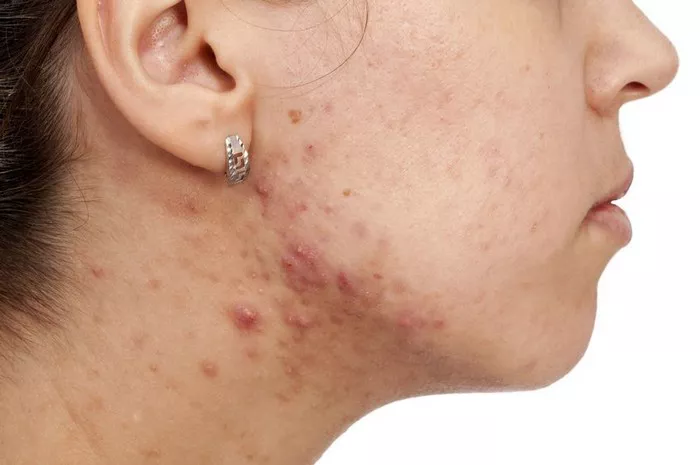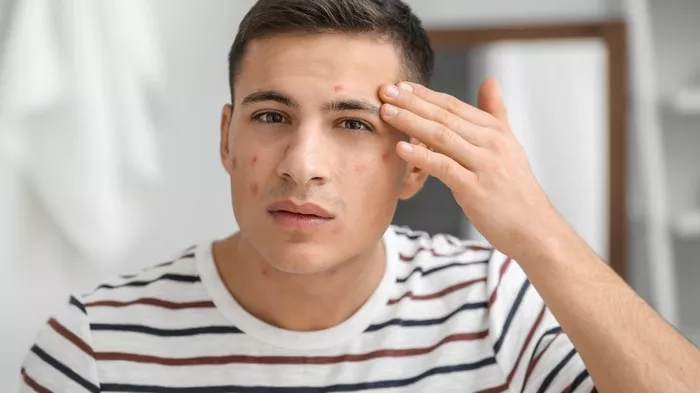Hidradenitis suppurativa (HS) is a chronic inflammatory skin condition that predominantly affects the apocrine sweat glands, leading to painful nodules, abscesses, and scarring. Commonly, HS manifests in areas where skin rubs together, such as the underarms, groin, buttocks, and under the breasts. However, there is growing curiosity and concern about whether hidradenitis suppurativa can affect the face. This article explores the possibility of HS occurring on the face, the implications, diagnosis, treatment options, and strategies for managing the condition.
Understanding Hidradenitis Suppurativa
Before delving into whether HS can affect the face, it’s essential to understand the nature of the disease. HS is characterized by the development of painful lumps under the skin, which can rupture and release fluid or pus. Over time, these lesions can lead to sinus tract formation and significant scarring. The exact cause of HS remains unclear, but it is believed to involve a combination of genetic, hormonal, and environmental factors. Obesity, smoking, and a family history of the condition are known risk factors.
Typical Locations of Hidradenitis Suppurativa
HS most commonly affects areas rich in apocrine glands. These include:
- Axillae (underarms)
- Inguinal (groin) area
- Perineal and perianal regions
- Buttocks
- Under the breasts
These regions are prone to friction, heat, and moisture, which can exacerbate the condition. HS typically manifests after puberty and can severely impact the quality of life due to pain, chronicity, and potential complications like infections and scarring.
Can Hidradenitis Suppurativa Affect the Face?
While it is rare, hidradenitis suppurativa can indeed affect the face. The occurrence of HS on the face is unusual and not as well-documented as other common sites. When it does occur, it can be mistaken for other dermatological conditions, leading to misdiagnosis and inappropriate treatment. Recognizing the possibility of facial HS is crucial for timely and effective management.
Clinical Presentation of HS on the Face
When HS affects the face, it may present differently from its usual manifestations. Key features to look for include:
- Painful Nodules: Similar to other areas, HS on the face can begin with painful, inflamed nodules.
- Abscess Formation: These nodules may progress to form abscesses that can rupture and drain pus.
- Sinus Tracts and Scarring: Chronic inflammation can lead to the formation of sinus tracts (tunnels under the skin) and significant scarring.
- Distribution: Facial HS may affect areas such as the cheeks, jawline, and neck, where friction and sweating can occur.
Differential Diagnosis
Facial lesions of HS can be confused with several other dermatological conditions, making accurate diagnosis challenging. Conditions that may mimic HS on the face include:
- Acne Vulgaris: Characterized by comedones, papules, pustules, and cysts.
- Folliculitis: Inflammation of hair follicles often due to infection.
- Boils (Furuncles): Deep folliculitis that can resemble HS abscesses.
- Rosacea: Chronic inflammatory condition presenting with redness, pimples, and in severe cases, rhinophyma.
Diagnosing HS on the Face
Diagnosing HS on the face involves a thorough clinical evaluation and sometimes, histopathological examination. Key steps include:
- Patient History: Understanding the patient’s history, including the presence of similar lesions in typical HS sites, family history, and associated risk factors like smoking and obesity.
- Physical Examination: Detailed examination of the lesions, noting their distribution, size, and any signs of sinus tracts or scarring.
- Biopsy: In ambiguous cases, a skin biopsy may be performed to differentiate HS from other conditions.
Treatment Options
Treating HS on the face requires a multifaceted approach, combining medical and surgical interventions to manage symptoms and prevent recurrence. Treatment strategies include:
Medical Management
Topical Therapies:
- Antibiotics: Clindamycin or combination of clindamycin with benzoyl peroxide.
- Antiseptics: Chlorhexidine washes to reduce bacterial load.
Systemic Therapies:
- Antibiotics: Oral antibiotics like tetracyclines, rifampicin, and clindamycin.
- Hormonal Therapy: Anti-androgens such as spironolactone and oral contraceptives for hormonally influenced HS.
- Biologics: TNF inhibitors like adalimumab have shown effectiveness in moderate to severe cases.
SEE ALSO: What Are the Causes of Hidradenitis Suppurativa?
Intralesional Injections:
- Corticosteroids: Direct injection into nodules to reduce inflammation and pain.
Surgical Management
- Incision and Drainage: For acute abscesses, although this is usually a temporary solution.
- Laser Therapy: Carbon dioxide laser treatment to excise affected tissue.
- Wide Excision: For chronic, recurrent cases, complete removal of affected tissue may be necessary to prevent recurrence.
- Skin Grafting: Post-excision reconstruction to cover defects.
Lifestyle and Self-Care Strategies
Managing HS, especially on the face, involves lifestyle modifications and self-care strategies to minimize flare-ups and maintain skin health. Recommendations include:
- Hygiene: Gentle cleansing of the face with non-comedogenic products to reduce bacterial load without irritating the skin.
- Diet and Weight Management: Maintaining a healthy weight and avoiding inflammatory foods such as dairy and high-glycemic-index foods.
- Smoking Cessation: Smoking is a significant risk factor for HS, and quitting can improve symptoms and reduce flare-ups.
- Stress Management: Stress can exacerbate HS, so incorporating stress-reducing practices like yoga, meditation, and regular exercise can be beneficial.
Psychological Impact and Support
The psychological impact of HS, particularly when it affects visible areas like the face, can be profound. Patients may experience low self-esteem, depression, and social anxiety. It is essential to address these aspects through:
- Counseling and Therapy: Professional support to manage the emotional and psychological burden.
- Support Groups: Connecting with others who have HS to share experiences and coping strategies.
- Education: Providing patients with information about the condition to empower them and reduce anxiety about the disease.
Future Directions and Research
Research into the causes and treatment of HS is ongoing, with promising developments in understanding the genetic and immunological underpinnings of the disease. Future directions may include:
- New Biologic Agents: Investigating other biologic agents that target different pathways involved in HS.
- Genetic Studies: Exploring genetic predispositions to better understand familial patterns and develop targeted therapies.
- Improved Diagnostic Tools: Developing more accurate and less invasive diagnostic methods to differentiate HS from other dermatological conditions.
Conclusion
While hidradenitis suppurativa predominantly affects areas with high concentrations of apocrine glands, it can, albeit rarely, affect the face. Recognizing this possibility is crucial for accurate diagnosis and effective management. Treatment involves a combination of medical and surgical interventions tailored to the individual’s needs, along with lifestyle modifications to reduce flare-ups. Addressing the psychological impact through counseling and support groups is also essential for comprehensive care. Continued research and advancements in treatment options hold promise for better management and improved quality of life for individuals with HS, including those with facial involvement.
Related Topics:
























